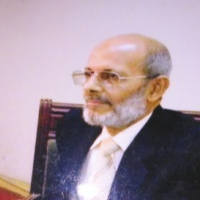International Journal of Computer Network and Information Security (IJCNIS)
IJCNIS Vol. 6, No. 12, 8 Nov. 2014
Cover page and Table of Contents: PDF (size: 544KB)
Communication Centrality in Dynamic Networks Using Time-Ordered Weighted Graph
Full Text (PDF, 544KB), PP.21-27
Views: 0 Downloads: 0
Author(s)
Index Terms
Social Network Analysis, Centrality measures, Time-ordered weighted graph, directed h-degree, Temporal communication centrality
Abstract
Centrality is an important concept in the study of social network analysis (SNA), which is used to measure the importance of a node in a network. While many different centrality measures exist, most of them are proposed and applied to static networks. However, most types of networks are dynamic that their topology changes over time. A popular approach to represent such networks is to construct a sequence of time windows with a single aggregated static graph that aggregates all edges observed over some time period. In this paper, an approach which overcomes the limitation of this representation is proposed based on the notion of the time-ordered graph, to measure the communication centrality of a node in dynamic networks.
Cite This Paper
Ali M. Meligy, Hani M. Ibrahem, Ebtesam A. Othman, "Communication Centrality in Dynamic Networks Using Time-Ordered Weighted Graph", International Journal of Computer Network and Information Security(IJCNIS), vol.6, no.12, pp.21-27, 2014. DOI:10.5815/ijcnis.2014.12.03
Reference
[1]Wasserman, S. & Faust, K, “Social Network Analysis: Methods and Applications”. Cambridge University Press, 1994.
[2]Tatiana Tabirca and Sabin Tabirca, Laurence T. Yang,“Centrality Indices Computation in Dynamic Networks”, IEEE 12th International Conference on Computer and Information Technology, 2012.
[3]Kristina Lerman, Rumi Ghosh, Jeon Hyung Kang, “Centrality Metric for Dynamic Networks”,www.isi.edu/integration/papers/lerman10mlg.pdf, 2010.
[4]D. Braha and Y. Bar-Yam, “From centrality to temporary fame: Dynamic centrality in complex networks”, Social Science Research Network Working Paper Series, 2006.
[5]J. Tang, M. Musolesi, C. Mascolo, V. Latora, V. Nicosia, “Analyzing information flows and key mediators through temporal centrality metrics”, In Proceedings of the 3rd Workshop on Social Network Systems, SNS ’10 (ACM, New York, NY, USA) , 2010.
[6]Hyoungshick Kim and Ross Anderson, “Temporal Node Centrality in Complex Networks”. Physical Review E, volume 85, 2012.
[7]Paolo Federico, Jurgen Pfeffery, Wolfgang Aigner, Silvia Miksch and Lukas Zenk, “visual analysis of dynamic networks using change centrality”, IEEE/ACM International conference on advanced in social networks analysis and mining, 2012.
[8]Xingqin Qi, Eddie Fuller, Qin Wu, Yezhou Wu, Cun-Quan Zhang,” Laplacian centrality: A new centrality measure for weighted networks”, Information Sciences, Elsevier, volume 194,pp. 240–253, 2012.
[9]A. Barrat, M. Barthe′lemy, R. Pastor-Satorras, and A. Vespignani,” The architecture of complex weighted networks”, Proceeding of the National Academey of Science, vol. 101, pp.3747-3752, 2004.
[10]M. E. J. Newman,” Scientific collaboration networks. Part II: shortest paths, weighted networks, and centrality”, Physical Review E, volume 64, 2001.
[11]Star X. Zhao, Ronald Rousseau, Fred Y. Ye, “h-Degree as a basic measure in weighted networks”, Journal of Informetrics, Elsevier, vol. 5, pp. 668– 677, 2011.
[12]S.X. Zhao, F.Y. Ye,” Exploring the directed h-degree in directed weighted networks”, Journal of Informetics, Elsevier, vol. 6, pp. 619–630, 2012.
[13]Li Zhai , Xiangbin Yan, Guojing Zhang,” A centrality measure for communication ability in weighted network”, Physica A, Elsevier, vol. 392, pp. 6107–6117, 2013.
[14]ErjiaYan ,Ying Ding, “Applying Centrality Measures to Impact Analysis:A Coauthorship Network Analysis”, journal of the American society for information science and technology, vol. 60, Issue 10, pp. 2107–2118, 2009.
[15]P. Bonacich, “Power and centrality: A family of measures”, American Journal of Sociology, vol. 92, pp. 1170–1182, 1987.
[16]S. Borgatti and M. Everett, “A graph-theoretic perspective on centrality”, Social Networks, vol. 28, pp. 466–484, 2006.
[17]M. U. Ilyas, H. Radha ,” Identifying Influential Nodes in Online Social Networks Using Principal Component Centrality”, In Communications (ICC), IEEE International Conference , 2011 .
[18]Sajjad Mahmood I, Muhammad Ali Khan,” A Degree Centrality-Based Approach to Prioritize Interactions of Component-Based Systems”, International Conference on Computer & Information Science (ICCIS), 2012.
[19]Miriam Baglioni, Filippo Geraci, Marco Pellegrini and Ernesto Lastres,” Fast exact computation of betweenness centrality in social networks”, IEEE/ACM International Conference on Advances in Social Networks Analysis and Mining, 2012.
[20]J. E. Hirsch, “An index to quantify an individual’s scientific research output”, roceedings of the National Academy of Sciences of the United States of America, 2005, pp.16569–16572.
[21]T. Opsahl, F. Agneessens, J. Skvoretz, Node centrality in weighted networks: generalizing degree and shortest paths, Social Networks,vol. 32 , 2010, pp. 245–251.
